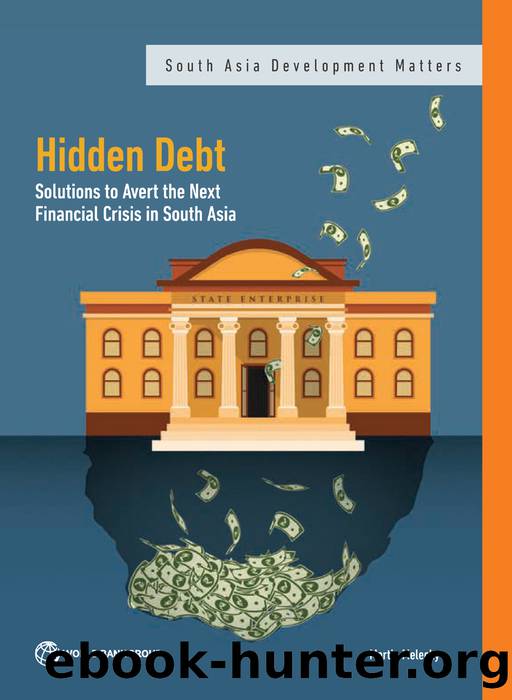Hidden Debt: Solutions to Avert the Next Financial Crisis in South Asia by Martin Melecky

Author:Martin Melecky
Language: eng
Format: epub
To estimate the adjustment size for each of these five categories for distressed SOCBs relative to private banks, we regress each variable in categories 1â5 on the distress dummy, the interaction of the distress dummy with the SOCB dummy, and control variablesâincluding bank and time fixed effects (see appendix 3A for a detailed description of the estimation methodology).
Overall Results, with a Focus on India
Our estimation results, summarized in figure 2.9, suggest that compared with distressed PVTBs (the control group), distressed SOCBs tend to adjust to distress by increasing capital relatively more than distressed PVTBs (see tables 2B.4 and 2B.5, in annex 2B, for detailed results). This finding could reflect the governmentâs efforts to promptly recapitalize at least systemically important public banksâmost notably, Indiaâs SBI. It can also reflect the softer budget constraints that SOCBs as a group enjoy compared with private banks. These softer budget constraints can then increase moral hazard among SOCBs and distort their incentives to properly manage credit and other risk taking, as well as act in a timely manner to restore their performance when it declines.
FIGURE 2.9 Differences in How State-Owned Commercial Banks and Domestically Owned Private Banks Adjust in Times of Distress
Download
This site does not store any files on its server. We only index and link to content provided by other sites. Please contact the content providers to delete copyright contents if any and email us, we'll remove relevant links or contents immediately.
International Integration of the Brazilian Economy by Elias C. Grivoyannis(57394)
The Radium Girls by Kate Moore(10918)
Turbulence by E. J. Noyes(7059)
Nudge - Improving Decisions about Health, Wealth, and Happiness by Thaler Sunstein(6643)
The Black Swan by Nassim Nicholas Taleb(6205)
Pioneering Portfolio Management by David F. Swensen(5616)
Rich Dad Poor Dad by Robert T. Kiyosaki(5167)
Zero to One by Peter Thiel(4835)
Man-made Catastrophes and Risk Information Concealment by Dmitry Chernov & Didier Sornette(4749)
Secrecy World by Jake Bernstein(3789)
Millionaire: The Philanderer, Gambler, and Duelist Who Invented Modern Finance by Janet Gleeson(3576)
Skin in the Game by Nassim Nicholas Taleb(3479)
The Age of Surveillance Capitalism by Shoshana Zuboff(3432)
The Money Culture by Michael Lewis(3292)
Skin in the Game: Hidden Asymmetries in Daily Life by Nassim Nicholas Taleb(3273)
Bullshit Jobs by David Graeber(3190)
The Dhandho Investor by Mohnish Pabrai(3176)
The Wisdom of Finance by Mihir Desai(3087)
Blockchain Basics by Daniel Drescher(2896)
